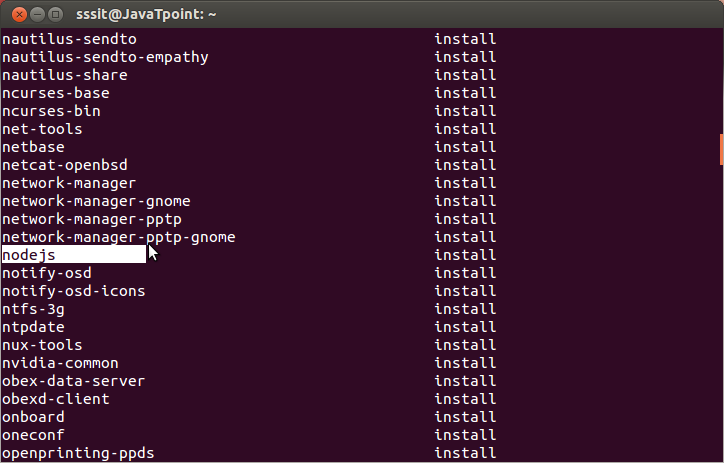
If the package in the repositories suits your needs, this is all you need to do to get set up with Node.js. This will not be the latest version, but it should be stable and sufficient for quick experimentation with the language. At the time of writing, the version in the repositories is 10.19. Ubuntu 20.04 contains a version of Node.js in its default repositories that can be used to provide a consistent experience across multiple systems. Option 1 - Installing Node.js with Apt from the Default Repositories
#Linux install nodejs how to
You can learn how to do this by following the Ubuntu 20.04 initial server setup tutorial. Before you begin, you should have a non- root user account with sudo privileges set up on your system. This guide assumes that you are using Ubuntu 20.04.

If you are actively developing Node applications and need to switch between node versions frequently, choose the nvm method. If you need specific newer (or legacy) versions of Node, you should use the PPA repository.
#Linux install nodejs software
using apt with an alternate PPA software repository to install specific versions of the nodejs package.

using apt to install the nodejs package from Ubuntu’s default software repository.In this guide, we will show you three different ways of getting Node.js installed on an Ubuntu 20.04 server: It allows developers to create scalable backend functionality using JavaScript, a language many are already familiar with from browser-based web development. You will not have to worry about the previously installed node version since above steps will change the nodeJs is a JavaScript runtime for server-side programming. To make sure everything is working fine check the nodeJs version by entering this command node -v it has to print v15.6.0. To refresh the profile file enter the below code. nano ~/.profileĪdd the following lines to the end: # NodeJSĮxport NODEJS_HOME=/ to the path where you extracted the compressed file in the previous step.įinally you can click CTRL+C to exit nano, type y then click enter. Since you're using Linux the below command will add the new extracted node to your path. You can't install the file using npm install, but since you already have the compressed file for node, my answer will hopefully help you achieve your goal.įirst of all you will have to extract the tar.gz file you have node-v15.6.0-linux-圆4.tar.gz, to do so just navigate to the folder where the file placed in then do the below command. Npm ERR! /home/usermachinename/npm-debug.log Npm ERR! Please include the following file with any support request: Npm ERR! enoent and is related to npm not being able to find a file. Npm ERR! enoent This is most likely not a problem with npm itself


Npm ERR! addLocal Could not install /home/usermachinename/node-v15.6.0-linux-圆4.tar.g z Npm WARN excluding symbolic link bin/npx ->. Npm WARN excluding symbolic link bin/npm ->. Getting below error ~]$ sudo npm install node-v15.6.0-linux-圆4.tar.gz I have tried ~ npm install node-v15.6.0-linux-圆4.tar.gz As I am installing nodejs offline, I should not depend on that whether or not npm installed. VM have already installed node v0.12.18 manually by someone else, I don't know how to do that. I have downloaded Nodejs in my Linux VM from, I want to install it from terminal.


 0 kommentar(er)
0 kommentar(er)
